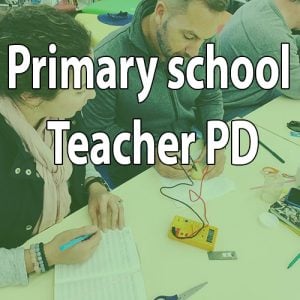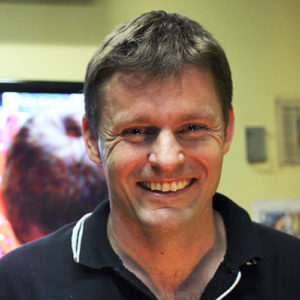One of the questions that often comes up when we present Primary STEM teacher professional development programs is how can students structure their reports following their science experiments. More explicitly, what should students from different grade levels include in their report so that they can communicate what they learned using language that they can understand. This can be challenging for teachers working with younger grades, as when you look at a classic scientific report the structure tends to be quite rigid and involved!
For example, if you look up what is expected of a university student you would generally see the following;
Title
- What is this experiment all about?
Abstract
- What is the overview of what happened?
- Not always required in a short lab report but is definitely part of the formal process if you submitted your research to a journal
- This tends to be written last as it covers the major points of your whole report.
Introduction
- What is the background knowledge about the topic and the experiment objectives
- The introduction includes relevant theories and the hypothesis that was tested in the experiment
Method
- Which materials did you use?
- How did you use these materials?
- How were the results collected?
Results & analysis
- A presentation of the results either using a table, graph or figure.
- A discussion of how you analysed the results
Discussion
- What do your results mean in the context of the background information you collected prior to the experiment?
- What are the key findings? Was your hypothesis confirmed or not?
- What were the limitations of your experiment and what could be done better or explored further next time?
Conclusion
- What was the experiment about?
- What were the findings?
- What are the implications of what you found? Think of this as the ‘big picture’
References
- Which journal articles, books and websites did you refer to in your background research?
- This follows a formal referencing style: Author or organisation. Year of publication (in round brackets) Title of report (in italics) Place of publication: publisher.
Appendices
- Tables of raw data or detailed calculations that are referenced in the main report.
So, the above might well and good for a high school science student but what about the Grade 1 or 5 student? The answer lies in what you want to achieve in the first place and the literacy levels of the students you have in front of you. Are you wanting to prepare students in upper years for high school? Do you just want them to create a quick report on what they did in their experiment? Do you want to keep it simple but still hold meaning? Are you trying to focus on teaching them variable testing or do you want them to initially learn to communicate as a reflection tool?
Eventually, this is up to you! You know your students best and the objectives of your school and your local curriculum as a whole. Still, we’ve seen the following broad structure used across a variety of primary schools and this may be of use to you

Find out more about Primary PD STEM Programs
The simpler report
- Title
- Hypothesis (we’ve seen this also written as ‘Prediction’, ‘Question to be answered’ or even ‘My guess’)
- Materials & Methods (A labelled picture can be great here too)
- Results
- Conclusion
It would be good if students include some background research or context if you are working with older primary students. Of course, we don’t want to dilute the learning here, as eventually the goal is for students to reach the end of high school knowing how scientific reports are created. However, we have to be mindful that different grades and learners have different needs and as such there isn’t a one-size-fits-all across all schools. What we do know is that we have found in higher grade levels that students have filled out experiment reports without knowing if their report actually answers all of the questions raised by the experiment in the first place. This means that these students are great at copying scaffolds but are not really understanding the purpose of a scientific report. Our job as educators is to help kids understand why the reports exist and what their purpose actually is.
Scientific reports are really a reflection & communication tool
If you really think about it, all a scientific report says in plain language is…
- Here is what we already know: …
- Here is what we want to know: …
- Here is the question we’re going to test: …
- Here is how we’re going to test it: …
- Here is what happened: …
- Here is what we think this means: …
- Here’s what we would do next: …
or even simpler:
- What did we want to know?
- How did we find this out?
- What did we learn?
- What does this mean?
- What should we try next?
Consider putting this or similar up on your wall somewhere so that students can answer each of these questions as they go through your report scaffold. Either way, the scientific report is designed to describe exactly what was the point of your experiment was and what are the implications of the findings. The idea is that another scientist can pick up where you left off and either repeat what you did or go conduct further research.
Teaching ideas for scientific report writing
- Why not get one class in your school to give their reports to another class? The other class then uses these reports to see if they can repeat the experiment. This might produce some strange results if followed to the letter!
- Get your students to present their report findings as a poster
- Have students get into the habit of keeping a lab book for their notes & results. This could then be included as part of the raw data in an appendix of their later report. Make sure that they use a title and a date for their rough notes otherwise they can confuse themselves immensely!
As much as report writing is the part of science that students like the least, it is through this process that they convey their findings to other people. Once they see the report as a communication tool, the structure will make more sense and you’ll find your students will be well prepared for later years of schooling!
Happy teaching,


























Comments